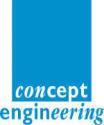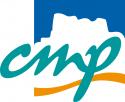UB07 Session 7
Date: Wednesday 29 March 2017
Time: 14:00 - 16:00
Location / Room: Booth 1, Exhibition Area
| Label | Presentation Title Authors |
|---|---|
| UB07.1 | COSSIM: A NOVEL, COMPREHENSIBLE, ULTRA-FAST, SECURITY-AWARE CPS SIMULATOR Presenter: Nikolaos Tampouratzis, Technical University of Crete, GR Authors: Antonios Nikitakis and Andreas Brokalakis, Synelixis Solutions Ltd, GR Abstract One of the main problems Cyber Physical Systems (CPS) and Highly Parallel Systems (HPS) designers face is the lack of simulation tools and models for system design and analysis. This is mainly because the majority of the existing simulation tools can handle efficiently only parts of a system (e.g. only the processing or only the network) while none of them supports the notion of security. Moreover, most of the existing simulators need extreme amounts of processing resources while faster approaches cannot provide the necessary precision and accuracy. COSSIM is an open-source framework that seamlessly simulates, in an integrated way, the networking and the processing parts of the CPS and Highly Parallel Heterogeneous Systems. In addition, COSSIM supports accurate power estimations while it is the first such tool supporting security as a feature of the design process. The complete COSSIM framework together with its sophisticated GUI will be presented. More information ... |
| UB07.2 | RIMEDIO: WHEELCHAIR MOUNTED ROBOTIC ARM DEMONSTRATOR FOR PEOPLE WITH MOTOR SKILLS IMPAIRMENTS Presenter: Alessandro Palla, University of Pisa, IT Authors: Gabriele Meoni and Luca Fanucci, University of Pisa, IT Abstract People with reduced mobility experiment many issues in the interaction with the indoor and outdoor environment because of their disability. For those users even the simplest action might be a hard/impossible task to perform without the assistance of an external aid. We propose a simple and lightweight wheelchair mounted robotic arm with the focus on the human-machine interface that has to be simple and accessible for users with different kind of disabilities. The robotic arm is equipped with a 5 MP camera, force and proximity sensors and a 6 axis Inertial Measurement Unit on the end-effector that can be controlled using an app running on a tablet. When the user selects the object to reach (for instance a button) on the tablet screen, the arm autonomously carries out the task, using the camera image and the sensors measurements for autonomous navigation. The demonstrator consists in the robotic arm prototype, the Android tablet and a personal computer for arm setup and configuration. More information ... |
| UB07.3 | FLEXPORT: FLEXIBLE PLATFORM FOR OBJECT RECOGNITION & TRACKING TO ENHANCE INDOOR LOCALIZATION AND MAPPING Presenter: Marko Rößler, Technische Universität Chemnitz, DE Authors: Christian Schott, Murali Padmanabha and Ulrich Heinkel, TU Chemnitz, DE Abstract Object detection plays a crucial role in realizing intelligent indoor localization and mapping techniques. With the advantages of these techniques comes the complexity of computing hardware and the mobility. While the availability of open source computer vision algorithms and High-Level-Synthesis framework accelerates the development, the hybrid processing architecture of an All Programmable System on Chip (APSoC) enables efficient hardware-software partitioning. Using these tools, a generic platform was designed for evaluating the computer vision algorithms. Open source components such as Linux kernel and OpenCV libraries were integrated for evaluation of the algorithms on the software while Vivado HLS framework was used to synthesize the hardware counter parts. Algorithms such as Sobel filtering and Hough Line transformation were implemented and analyzed. The capabilities of this platform were used to realize a mobile object detection system for enhancing the localization techniques. More information ... |
| UB07.4 | NETWORKED LABS-ON-CHIPS Presenter: Andreas Grimmer, Johannes Kepler University Linz, AT Authors: Werner Haselmayr, Andreas Springer and Robert Wille, Johannes Kepler University Linz, AT Abstract Labs-on-Chip (LoC) allow for the miniaturization, integration, and automation of medical and bio-chemical procedures. In recent years, different technologies have been considered. However, all of them have their drawbacks, e.g. electrowetting-based LoCs suffer from the evaporation of liquids, the fast degradation of the surface coatings, and the inferior biocompatibility, while flow-based LoCs require a complex and costly multilayer fabrication process. Hence, an alternative has recently been proposed in terms of Networked Labs-on-Chips. We present and demonstrate the NLoC technology where so-called droplets flow inside channels of micrometer-size. Networking functionalities enable the designer to dynamically select the operations to be conducted. These networking functionalities exploit hydrodynamic forces acting on droplets. Moreover, NLoC devices can be produced at low cost (e.g. using 3D printers). By this, drawbacks of established LoC-technologies are addressed. More information ... |
| UB07.5 | SCCHARTS: SYNCHRONOUS STATECHARTS FOR SAFETY-CRITICAL APPLICATIONS Presenter: Reinhard von Hanxleden, Kiel University, DE Authors: Michael Mendler1, Christian Motika2, Christoph Daniel Schulze2 and Steven Smyth2 1Bamberg University, DE; 2Kiel University, DE Abstract We present a visual language, SCCharts, designed for specifying safety-critical reactive systems. SCCharts use a statechart notation and provide determinate concurrency based on a synchronous model of computation (MoC), without restrictions common to previous synchronous MoCs. Specifically, we lift earlier limitations on sequential accesses to shared variables, by leveraging the sequentially constructive MoC. For further details, see [von Hanxleden et al., PLDI'14] and http://www.sccharts.com. The SCCharts demonstrator is an Eclipse Richt Client and part of KIELER (http://www.rtsys.informatik.uni-kiel.de/en/research/kieler). The demonstration shows how to write an SCChart model using a textual notation, from which a visual model is generated on the fly using the Eclipse Layout Kernel (ELK). We also present a compilation chain that allows efficient synthesis of software and hardware. More information ... |
| UB07.6 | GNOCS: AN ULTRA-FAST, HIGHLY EXTENSIBLE, CYCLE-ACCURATE GPU-BASED PARALLEL NETWORK-ON-CHIP SIMULATOR Presenter: Amir CHARIF, TIMA, FR Authors: Nacer-Eddine Zergainoh and Michael Nicolaidis, TIMA, FR Abstract With the continuous decrease in feature sizes and the recent emergence of 3D stacking, chips comprising thousands of nodes are becoming increasingly relevant, and state-of-the-art NoC simulators are unable to simulate such a high number of nodes in reasonable times. In this demo, we showcase GNoCS, the first detailed, modular and scalable parallel NoC simulator running fully on GPU (Graphics Processing Unit). Based on a unique design specifically tailored for GPU parallelism, GNoCS is able to achieve unprecedented speedups with no loss of accuracy. To enable quick and easy validation of novel ideas, the programming model was designed with high extensibility in mind. Currently, GNoCS accurately models a VC-based microarchitecture. It supports 2D and 3D mesh topologies with full or partial vertical connections. A variety of routing algorithms and synthetic traffic patterns, as well as dependency-driven trace-based simulation (Netrace), are implemented and will be demonstrated More information ... |
| UB07.7 | PER: METHOD AND TOOL FOR ANALYZING THE INTERPLAY BETWEEN PERFORMANCE, ENERGY AND SCALING IN MULTI- AND MANY-CORE PLATFORMS Presenter: Fei Xia, Newcastle University, GB Authors: Ashur Rafiev, Alexander Romanovsky and Alex Yakovlev, Newcastle University, GB Abstract Parallelization has been used to maintain a reasonable balance between energy consumption and performance in computing systems. However, the effectiveness of parallelization scaling is different for different hardware platforms. This is because the reliable operation region (ROR), a region defined in the voltage-throughput space for any hardware platform, is platform-dependent and its shape determines how effective parallelization scaling is in improving throughput and/or reducing power consumption. Although many of the interlinked issues are known, a unifying analysis method has just now been proposed to study the interplay between performance, energy, reliability and parallelization scaling. The method of bi-normalization of the ROR is designed to help achieve a meaningful cross-platform analysis of this interplay. The PER tool brings all these issues together and helps designers reason about hardware parallelization, DVFS and software parallelizability. More information ... |
| UB07.8 | SELINK: SECURING HTTP AND HTTPS-BASED COMMUNICATION VIA SECUBE™ Presenter: Airofarulla Giuseppe, CINI & Politecnico di Torino, IT Authors: Paolo Prinetto1 and Antonio Varriale2 1Politecnico di Torino, IT; 2Blu5 Labs Ltd., IT Abstract The SEcube™ Open Source platform is a combination of three main cores in a single-chip design. Low-power ARM Cortex-M4 processor, a flexible and fast Field-Programmable-Gate-Array (FPGA), and an EAL5+ certified Security Controller (SmartCard) are embedded in an extremely compact package. This makes it a unique Open Source security environment where each function can be optimized, executed, and verified on its proper hardware device. In this demo, we present a client-server HTTP and HTTPS-based application, for which the traffic is encrypted resorting to the hardware built-in capabilities, and the software libraries, of the SEcube™. By doing so, we show how communication can be secured from an attacker capable of inspecting, and tampering, the regular communication. More information ... |
| UB07.9 | STACKADROP: A MODULAR DIGITAL MICROFLUIDIC BIOCHIP RESEARCH PLATFORM Presenter: Oliver Keszöcze, University of Bremen, DE Authors: Maximilian Luenert and Rolf Drechsler, University of Bremen & DFKI GmbH, DE Abstract Advances in microfluidic technologies have led to the emergence of Digital Microfluidic Biochips (DMFBs), which are capable of automating laboratory procedures. These DMFBs raised significant attention in industry and academia creating a demand for devices. Commercial products are available but come at a high price. So far, there are two open hardware DMFBs available: the DropBot from WheelerLabs and the OpenDrop from GaudiLabs. The aim of the StackADrop was to create a DMFB with many directly addressable cells while still being very compact. The StackADrop strives to provide means to experiment with different hardware setups. It's main feature are the exchangeable top plates, supporting 256 high-voltage pins. It features SPI, UART and I2C connectors for attaching sensors/actuators and can be connected to a computer using USB for interactive sessions using a control software. The modularity allows to easily test different cell shapes, such as squares, hexagons and triangles. More information ... |
| UB07.10 | PULP: A ULTRA-LOW POWER PLATFORM FOR THE INTERNET-OF-THINGS Presenter: Francesco Conti, ETH Zurich, CH Authors: Stefan Mach1, Florian Zaruba1, Antonio Pullini1, Daniele Palossi1, Giovanni Rovere1, Florian Glaser1, Germain Haugou1, Schekeb Fateh1 and Luca Benini2 1ETH Zurich, CH; 2ETH Zurich, CH and University of Bologna, IT Abstract The PULP (Parallel Ultra-Low Power) platform strives to provide high performance for IoT nodes and endpoints within a very small power envelope. The PULP platform is based on a tightly-coupled multi-core cluster and on a modular architecture, which can support complex configurations with autonomous I/O without SW intervention, HW-accelerated execution of hot computation kernels, fine-grain event-based computation - but can also be deployed in very simple configuration, such as the open source PULPino microcontroller. In this demonstration booth, we will showcase several prototypes using PULP chips in various configuration. Our prototypes perform demos such as real-time deep-learning based visual recognition from a low-power camera, and online biosignal acquisition and reconstruction on the same chip. Application scenarios for our technology include healthcare wearables, autonomous nano-UAVs, smart networked environmental sensors. More information ... |
| 16:00 | End of session Coffee Break in Exhibition Area On all conference days (Tuesday to Thursday), coffee and tea will be served during the coffee breaks at the below-mentioned times in the exhibition area. Tuesday, March 28, 2017
Wednesday, March 29, 2017
Thursday, March 30, 2017
|





